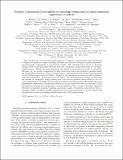Files in this item
Towards a quantitative description of tunneling conductance of superconductors : application to LiFeAs
Item metadata
| dc.contributor.author | Kreisel, A. | |
| dc.contributor.author | Nelson, R. | |
| dc.contributor.author | Berlijn, T. | |
| dc.contributor.author | Ku, W. | |
| dc.contributor.author | Aluru, Ramakrishna | |
| dc.contributor.author | Chi, Shun | |
| dc.contributor.author | Zhou, Haibiao | |
| dc.contributor.author | Singh, Udai Raj | |
| dc.contributor.author | Wahl, Peter | |
| dc.contributor.author | Liang, Ruixing | |
| dc.contributor.author | Hardy, Walter N. | |
| dc.contributor.author | Bonn, D. A. | |
| dc.contributor.author | Hirschfeld, P. J. | |
| dc.contributor.author | Andersen, Brian M. | |
| dc.date.accessioned | 2016-12-19T16:30:12Z | |
| dc.date.available | 2016-12-19T16:30:12Z | |
| dc.date.issued | 2016-12-27 | |
| dc.identifier | 248134349 | |
| dc.identifier | 7f50de84-40c2-4ce1-968d-5621c510efc6 | |
| dc.identifier | 85007415361 | |
| dc.identifier | 000391006700006 | |
| dc.identifier.citation | Kreisel , A , Nelson , R , Berlijn , T , Ku , W , Aluru , R , Chi , S , Zhou , H , Singh , U R , Wahl , P , Liang , R , Hardy , W N , Bonn , D A , Hirschfeld , P J & Andersen , B M 2016 , ' Towards a quantitative description of tunneling conductance of superconductors : application to LiFeAs ' , Physical Review. B, Condensed matter and materials physics , vol. 94 , no. 22 , 224518 . https://doi.org/10.1103/PhysRevB.94.224518 | en |
| dc.identifier.issn | 1098-0121 | |
| dc.identifier.other | ArXiv: http://arxiv.org/abs/1610.00619v1 | |
| dc.identifier.other | ORCID: /0000-0002-8635-1519/work/46939650 | |
| dc.identifier.other | ORCID: /0000-0001-9773-7719/work/29270740 | |
| dc.identifier.uri | https://hdl.handle.net/10023/9989 | |
| dc.description.abstract | Since the discovery of iron-based superconductors, a number of theories have been put forward to explain the qualitative origin of pairing, but there have been few attempts to make quantitative, material-specific comparisons to experimental results. The spin-fluctuation theory of electronic pairing, based on first principles electronic structure calculations, makes predictions for the superconducting gap. Within the same framework, the surface wavefunctions may also be calculated, allowing e.g. for detailed comparisons between theoretical results and measured scanning tunneling topographs and spectra. Here we present such a comparison between theory and experiment on the Fe-based superconductor LiFeAs. Results for the homogeneous surface as well as impurity states are presented as a benchmark test of the theory. For the homogeneous system, we show that and why the maxima of topographic image intensity may be located at positions above either the As or Li atoms, depending on tip height and the setpoint current of the measurement. We further report the experimental observation of transitions between As and Li-registered lattices as functions of both tip height and setpoint bias, in agreement with this prediction. Next, we give a detailed comparison between the simulated scanning tunneling microscopy images of transition metal defects with experiment. Finally, we discuss possible extensions of the current framework to obtain a theory with true predictive power for STM in Fe-based systems. | |
| dc.format.extent | 13 | |
| dc.format.extent | 3528359 | |
| dc.language.iso | eng | |
| dc.relation.ispartof | Physical Review. B, Condensed matter and materials physics | en |
| dc.subject | QC Physics | en |
| dc.subject | QD Chemistry | en |
| dc.subject | T Technology | en |
| dc.subject | DAS | en |
| dc.subject.lcc | QC | en |
| dc.subject.lcc | QD | en |
| dc.subject.lcc | T | en |
| dc.title | Towards a quantitative description of tunneling conductance of superconductors : application to LiFeAs | en |
| dc.type | Journal article | en |
| dc.contributor.sponsor | EPSRC | en |
| dc.contributor.institution | University of St Andrews. School of Physics and Astronomy | en |
| dc.contributor.institution | University of St Andrews. Condensed Matter Physics | en |
| dc.identifier.doi | https://doi.org/10.1103/PhysRevB.94.224518 | |
| dc.description.status | Peer reviewed | en |
| dc.identifier.grantnumber | EP/I031014/1 | en |
This item appears in the following Collection(s)
Items in the St Andrews Research Repository are protected by copyright, with all rights reserved, unless otherwise indicated.

